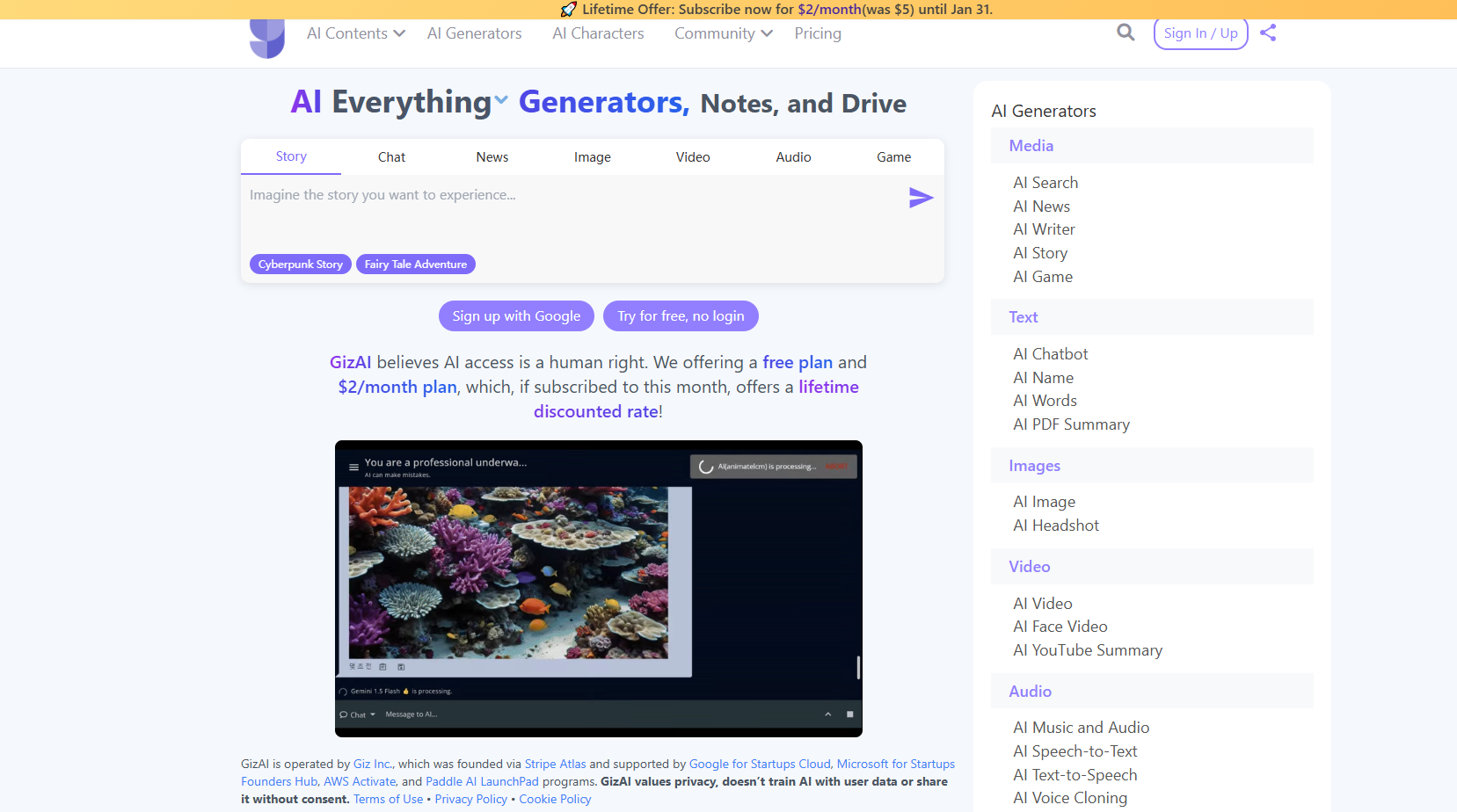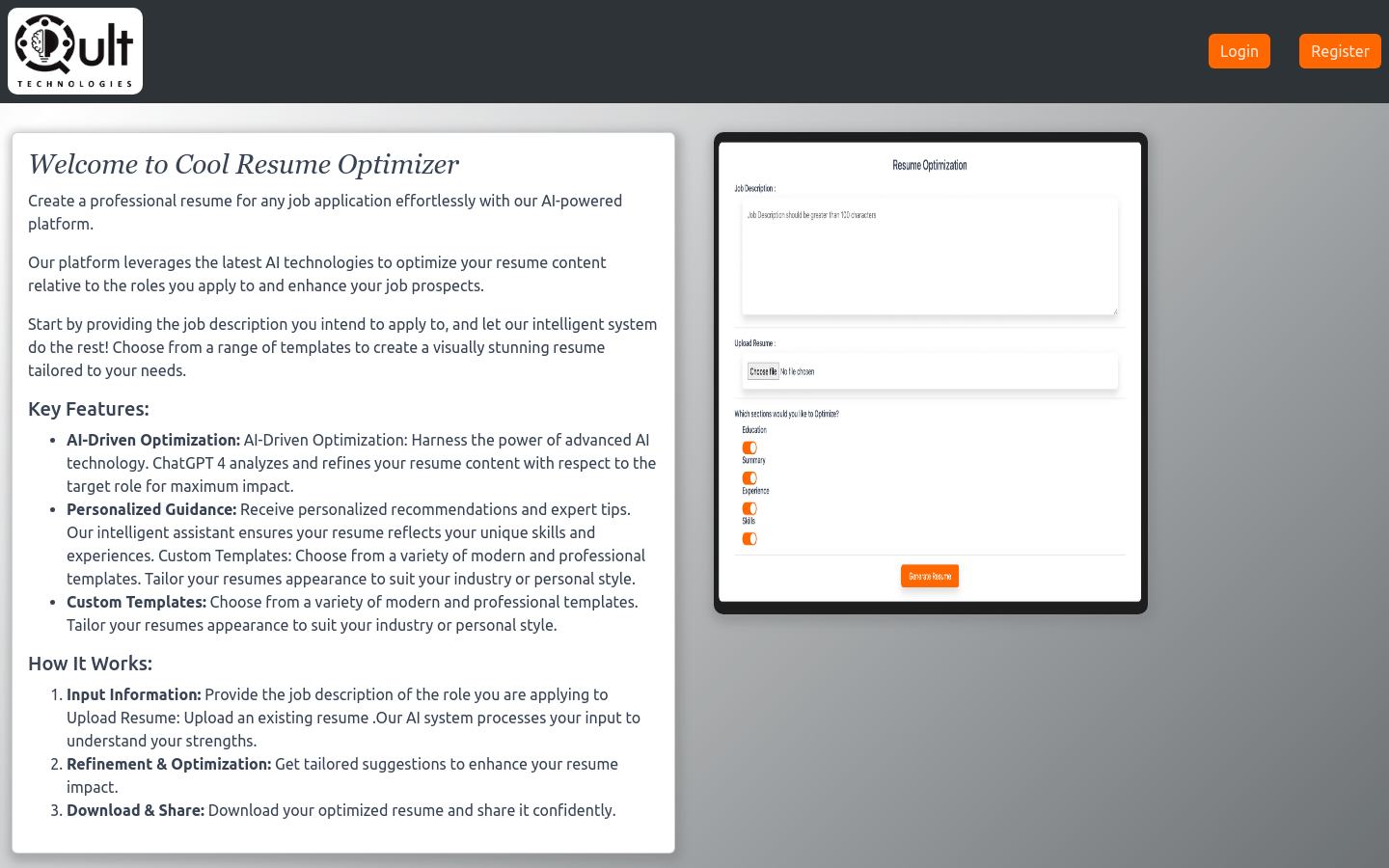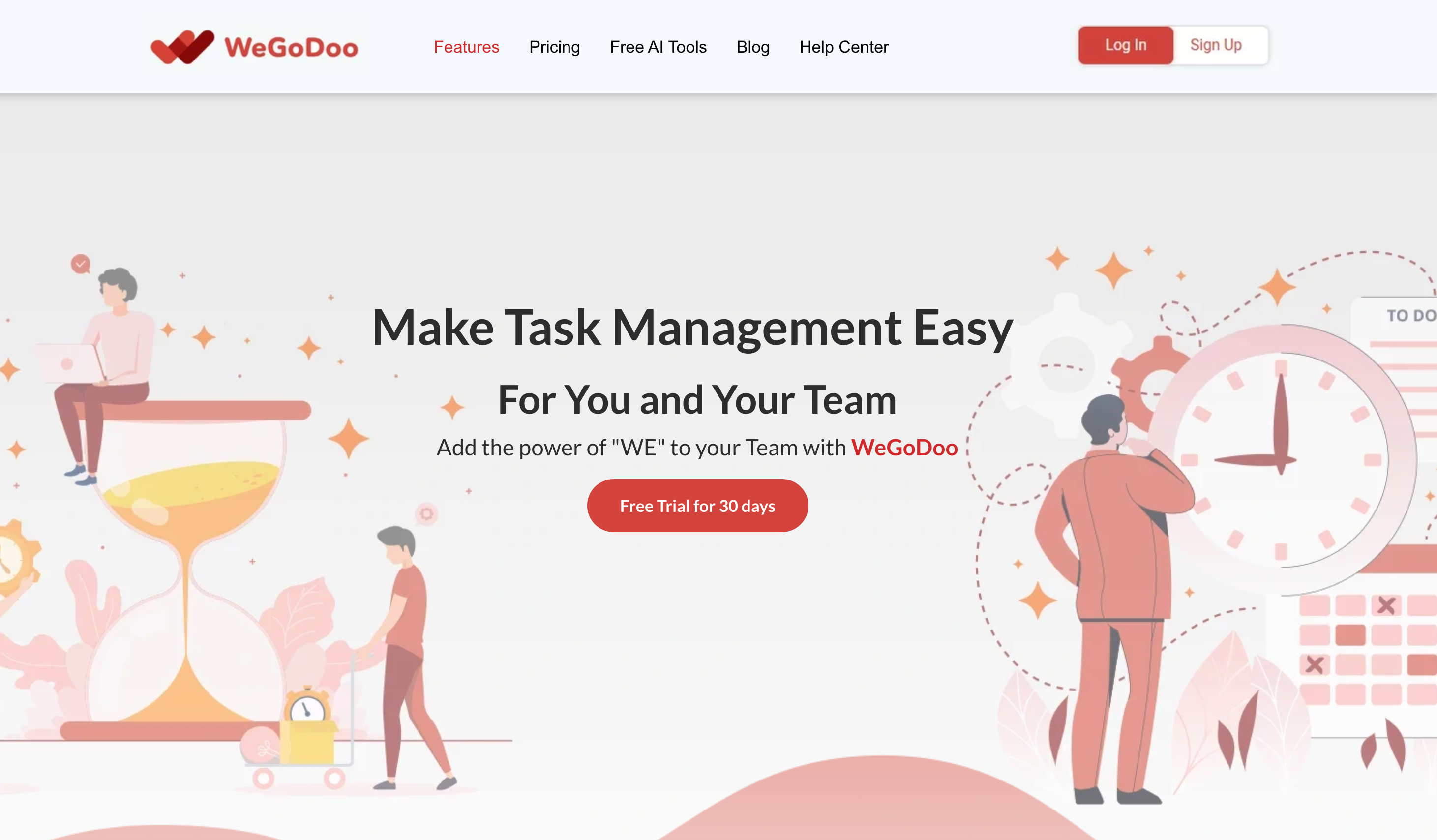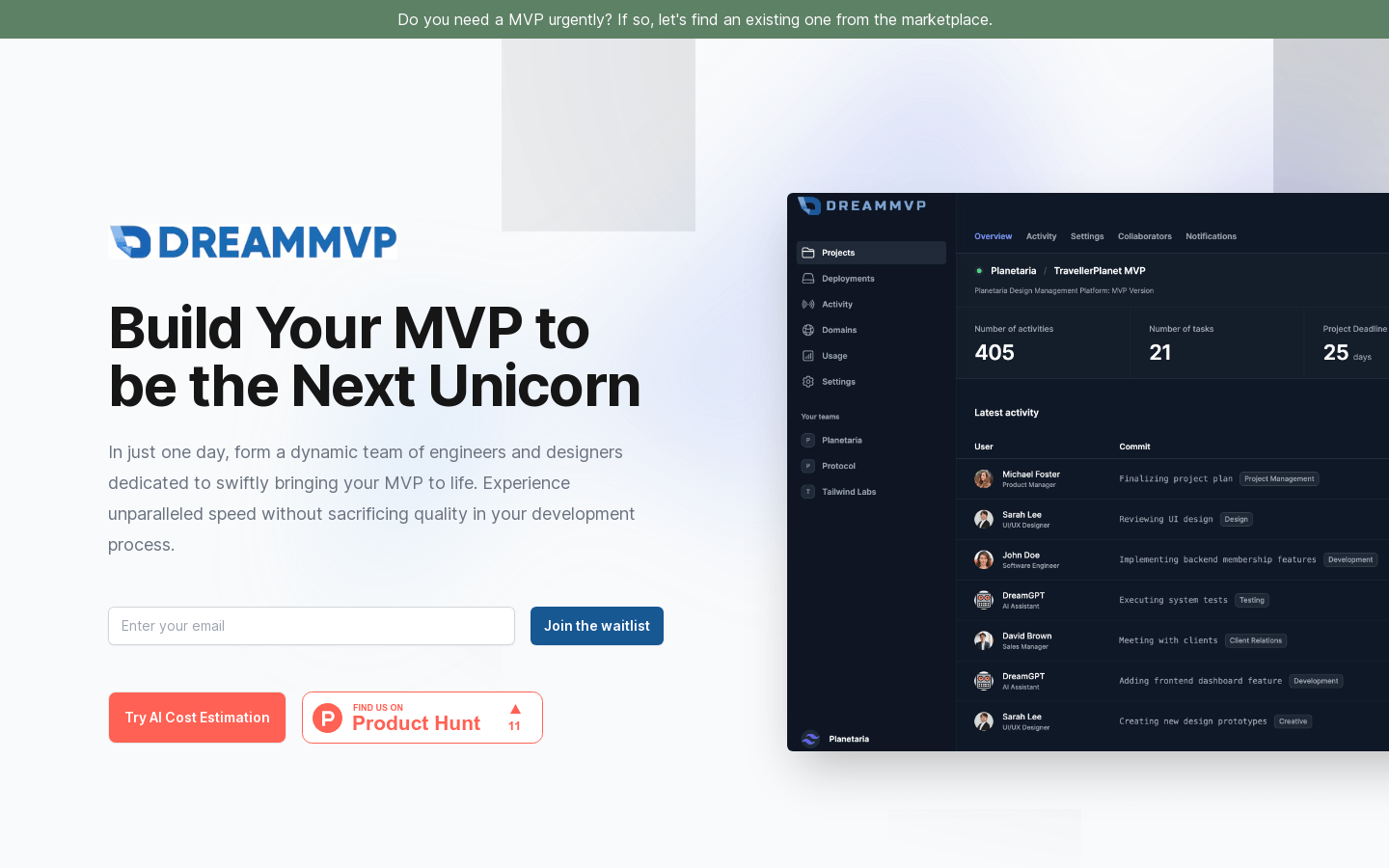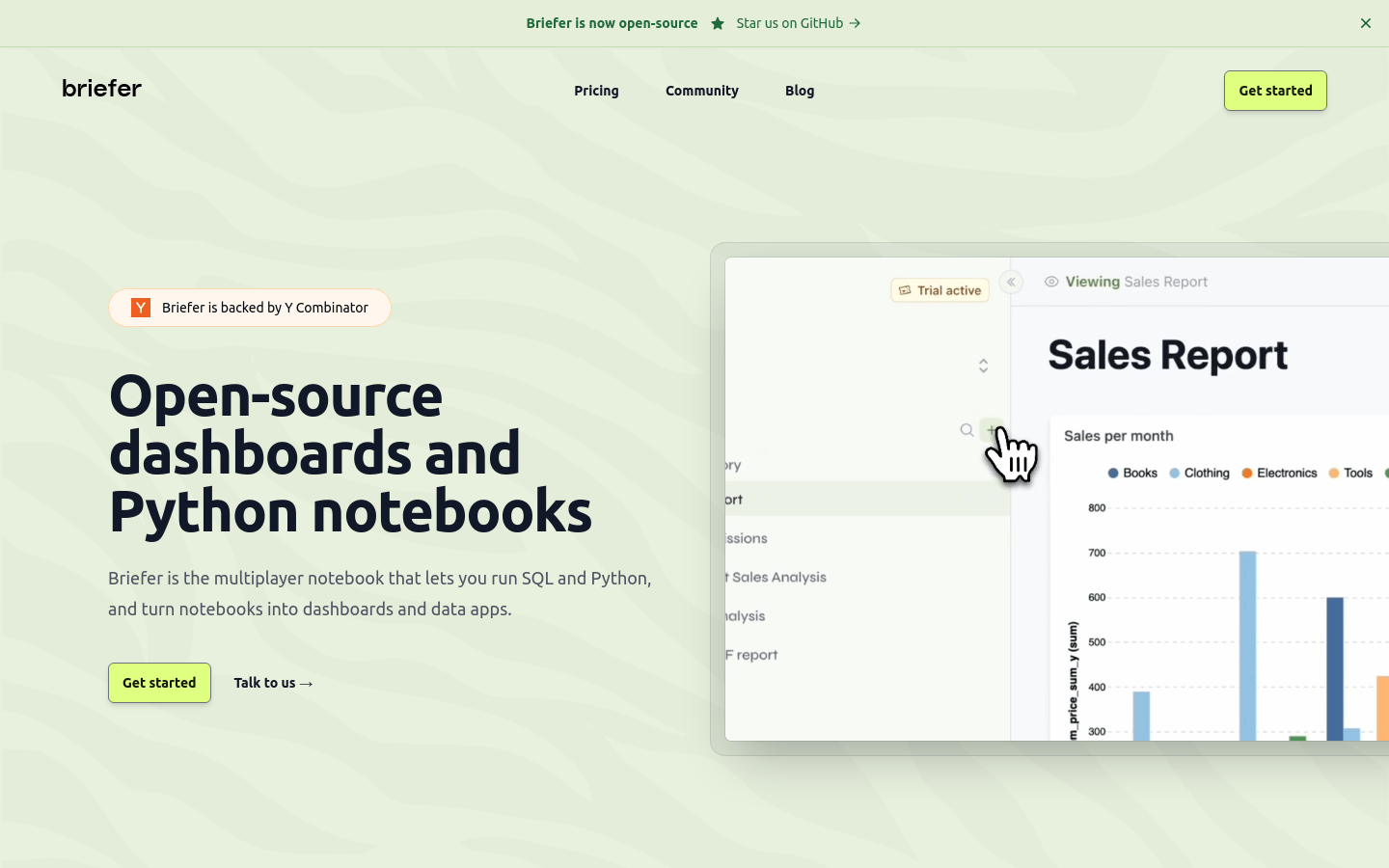
Briefer - Open source data platform
Briefer is an open source data platform that allows users to run SQL and Python code and transform notebooks into dashboards and data applications. It supports connecting to multiple data sources such as Postgres, BigQuery and Redshift. With Briefer , users can use query results directly in code blocks and take advantage of pre-installed libraries and built-in AI assistants to improve coding efficiency. Briefer 's dashboard and data application capabilities enable users to create interactive pages for data exploration and decision support.
target audience
Briefer is mainly intended for data scientists, engineers, and teams that need to perform data analysis and visualization. These users can use Briefer to improve the efficiency of data processing and analysis, quickly create dashboards and data applications, and promote team collaboration.
Usage scenario examples
Data Scientist: Use Briefer for complex data analysis and model training.
Teams of engineers: Use Briefer to collaborate on developing data-driven applications.
Enterprise: Create interactive dashboards through Briefer to monitor business indicators in real time.
Product features
Supports connecting to multiple data sources, including Postgres, BigQuery and Redshift.
Write SQL directly in Briefer and automatically convert query results into data frames.
Built-in AI assistant to help users quickly write Python code.
Supports converting notebooks into interactive dashboards and data applications.
Provides the function of regularly running Python code blocks, suitable for data writeback or machine learning model training.
Supports creating public links to share reports and dashboards with others.
Supports real-time collaborative editing by multiple people, and allows you to view the editor and edited parts in real time.
Tutorial
1. Visit Briefer official website and register an account.
2. Connect to your data sources, such as Postgres, BigQuery, etc.
3. Write the SQL query in the Briefer document and run it.
4. Use query results to perform data processing and analysis in Python code blocks.
5. Convert analysis results into dashboards or data applications.
6. Set up scheduled tasks to automatically run Python code blocks.
7. Collaborate with team members to edit documents and view their edits in real time.
8. Publish a dashboard or data app and create a public link to share it with others.
